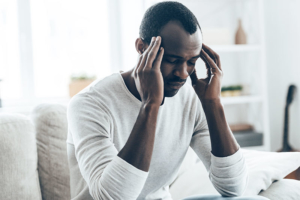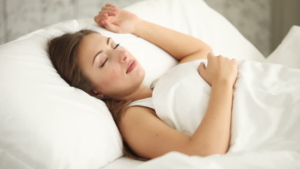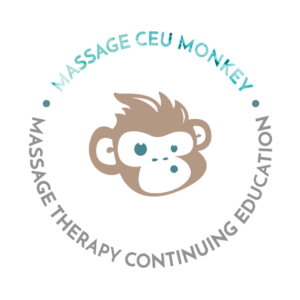The Benefits of Massage
After a long day, who wouldn’t like a soothing massage?
It eases achy muscles, sets you into a peaceful state of mind, and it feels absolutely amazing!
Did you know that this infrequent indulgence, massage therapy, can come with some pretty impressive health benefits too?
The health benefits of massage are numerous. Massage therapy treatments have been shown to help athletes reduce muscle soreness, improve circulation, ward off stress and anxiety, reduce pain from certain health conditions, and so much more.
The benefits of a therapeutic massage are powerful, and it can work in your favor to improve, or enhance, your current quality of life.
Are you working on maintaining your health?
Trying to decompress from a stressful day of work? If so, massage therapy can be an excellent addition to your diet, exercise regimen, or even to simply boost your mental clarity & peace of mind. Whether you are a student, weekend warrior, a working mother, professional athlete, or a top-level executive, massage therapy has something to offer you.
Let’s dive in!
Massage Therapy Benefits for Pain Management
Living every day with chronic aches and pains can take a hefty burden on a persons’ productivity and overall mental outlook.
On top of this, navigating all of the pain management options available can make it difficult to find a viable solution to specific concerns.
Individuals with chronic pain are recommended everything from prescription pain killers, education on thinking your way out of pain, stretching, acupuncture treatments, chiropractic treatments, all the way to topical creams, and the list goes still goes on.
Heck, you can even do a quick online search for pain management and get bombarded by ads, all the way from ketamine injections to wearable pain relief technology with an app for your phone, too.
With information overload and the endless pain management options, it is no wonder we don’t know where to begin. At what point can we find a treatment that really works for us without all the harmful side effects?
One thing we do know, is that the benefits of massage may provide some relief from certain pain conditions, such as fibromyalgia, neck pain, and lower back pain.
An interesting research study found that 15 treatments of connective tissue massage for the treatment of individuals with fibromyalgia conveyed a pain-relieving effect of 37%, hindered feelings of depression, reduced the use of pain killers, and positively affected quality of life.
All of these benefits appeared gradually during the 10-week treatment period, and then began to dissipate 3 months after treatment (Brattberg, 1999). Since the effects of the continuous massage treatments wore off, we can conclude there is some benefit to receiving consistent massage therapy sessions to get the most benefits from this treatment.
Another study on the benefits of massage for fibromyalgia, published in 2011, found that (at the end of treatment) patients who received a combination of massage therapy, ischemic pressure on the 18 tender points, aerobic exercise, and thermal-therapy, found significant improvement in vitality, social function, grip strength, and a 6-minute walk test, compared to the control group.
One month after treatment ceased, researchers found that the experimental group receiving the massage therapy showed significant differences compared to the control group.
The study concludes that patients with severe manifestations of fibromyalgia can seek relief through low cost (heat therapy, for example) and simple-delivery programs, like exercise and massage therapy (Casanueva-Fernandez, 2011).
In another study conducted with 74 fibromyalgia patients, half of the patients were randomly assigned to a control/placebo group, and the other half to an experimental group, who received massage-myofacial release therapy.
The placebo group received a sham treatment with a disconnected magnotherapy device. The researchers in this study sought to evaluate pain, anxiety, depression, quality of sleep, and quality of life, all of which were documented from the study participants, and used as a baseline.
Over the intervention period of 20 weeks, measurements were taken after the last treatment session, at 1 month, and at 6 months.
The researchers noticed that after treatment and at 1 month, all 5 markers (pain, anxiety, depression, quality of sleep, and quality of life) improved in the experimental group over the placebo group.
However, the measurements at 6 months found the only significant difference in the quality of sleep index between experimental and control groups.
The study ultimately concluded that myofascial release techniques can improve pain and quality of life in patients with fibromyalgia (Castro-Sanchez, 2011)
Not only does massage therapy hold promise for fibromyalgia, it may also ease some of the pain symptoms associated with the back and neck.
One randomized control trial published in 2011, enrolled slightly over 400 participants who had lower back pain with no identified cause for at least 3 months. There were 3 treatment groups in the study the participants were divided into: relaxation massage, structural massage, or standard medical care (medications, education, or physical therapy).
Relaxation massage and structural massage are slightly different. Here’s how.
Think of a relaxation massage similar to a Swedish massage.
This type of massage therapy session involves long, flowing strokes, circular movements, and/or kneading. On the other hand, a structural massage will address more musculoskeletal issues, such as posture, sports injuries, chronic body aches, or myofascial release.
The participants in both massage groups received 1 hour of massage therapy treatments once a week for 10 weeks.
Symptoms, ability to perform daily tasks and activities, and medication usage were all measured after completion of the 10 treatments, and again at 6 months. A final measurement was taken after 1 year.
The study ultimately found significantly larger improvements in disability and irritation of symptoms at 10 weeks in BOTH massage groups.
At 10 weeks the participants were more active, better able to perform daily activities, spent less time on bed-rest, and consumed less anti-inflammatory medications than those who received standard medical care.
Some of these benefits were still present at the 6 month mark, but at the 1 year mark, the benefits of massage over standard medical care were not significant. This was when pain and function across all three groups had improved about evenly.
While all three groups had improved about evenly towards the end of this study, it is important to note that massage may be a better alternative to standard medical care options, especially in the case for regular users of medications such as NSAIDS, Ibuprofen, or prescription pain killers.
Over-use and dependence of over the counter (OTC) medications can have unwanted side effects, such as stomach ulcers, kidney damage, and cardiovascular complications, to name a few.
Consistent massage therapy treatments to ameliorate pain and discomfort could prove to be a better choice in pain management compared to standard medical care, such as OTC drugs & prescription medications, in the long-haul.
Massage Therapy Benefits for Stress & Anxiety
Stress and anxiety can be very problematic in an individual’s life if the symptoms are not addressed.
As we all know, everyone experiences stress differently and in varying ways. You can have someone who responds to stress by over-eating, and therefore has a tendency to gain wait during tough times.
Or you may have a father in his late fifties, who feels like he has a “sixty-pound weight on my chest” every time he steps into the office. Others may endure stress as feeling as if they have a giant knot in their stomach, or a vacuum in their lungs that won’t let them take a breath.
These metaphors are grounded in the body, because stress is as present in the body as in the head. When the stress-response system is on high alert, the body produces more of the stress hormones cortisol and epinephrine.
The heart beats faster and blood pressure rises. The Vagus nerve, which help to modulate our physiological reaction to stress, withdraws its benefits.
That is why it’s harder to breath, impulses are harder to control, and it is hard to imagine you’re in a safe space.
For individuals who suffer from chronic stress, these responses are on a low but present alert, keeping the person in a state of physiological vigilance.
A stressed-out state of mind can make it difficult to concentrate at work, deal with people, and feel good about ourselves. Not only that, but stress can contribute to faster aging.
Work can sometimes be a lead contributor to stress, especially when the hours are long and the stakes are high.
In this next study, researchers sought to evaluate the effectiveness of a 10-minute chair massage on the stress perception of hospital nurses in comparison to a routine coffee break during a working shift.
The study found that stress perception was significantly lower in the massage group, and did not significantly change in the group that received the 10-minute coffee break instead.
In conclusion, the incorporation of the 10-minute chair massage into the nurse’s hospital shift was do-able and a 10-minute massage session reduced their levels of stress.
The study recommends further research on the longer-term feasibility and effects of chair massage on high stress professions.
However, we know that stress can wreak havoc on the mind and body, so any reduction in stress within the work place (and home) can be a huge benefit to the employees and the organization as a whole.
Benefits of Massage Therapy & Sleep
Most of us already realize that we need more sleep – the question is figuring out how to get it, and how to get it consistently.
Sufficient sleep is a key component to an individual’s overall health and happiness. Not getting suitable hours of sleep to function properly can have problematic consequences, along with profound health risks.
According to the CDC, inadequate sleep is linked with a variety of chronic diseases and conditions such as diabetes, cardiovascular disease, depression, and obesity.
Poor sleep habits can also cause dire consequences. When sleep deprivation is paired with driving, operating heavy machinery, or in a health care setting where lives are on the line, the results can be deadly.
One key component of sleep is called REM, which stands for Rapid Eye Movements. This type of sleep is restorative, and is characterized by a quicker heart rate, faster breathing, and more time spent in dreamland.
During this crucial time of REM sleep, cortisol levels are suppressed and your metabolic rate increases. When we don’t sleep well, we get less REM sleep in the second half of the night, which results in higher levels of cortisol and insulin, which stimulate appetite and cause greater insulin resistance.
In simple terms, this means that a poor night of sleep can throw you into a temporary pre-diabetic state.
In fact, studies have shown that even one night of partial sleep, or one night without enough REM sleep, can lead to higher cortisol the next afternoon or evening, along with changes in the hormones and peptides that regulate appetite and lead to greater feelings of hunger (Blackburn, 2017) (Gonnissen, 2013).
We have identified the importance of sleep for our weight, heart-health, productivity and overall happiness, so now we need to know, how can massage therapy benefit us in terms of getting more sleep?
One research study evaluated whether or not sleep disturbance could be reduced for individuals with lower back pain following massage therapy. The study participants were randomly assigned to a massage therapy group or a progressive muscle relaxation group. The sessions for either group were 30 minutes long, twice a week for 5 weeks. On the 1st and last day of the study the participants filled out questionnaires, provided a urine sample, and were assessed for range of motion.
At the conclusion of the study, it was discovered that the massage therapy group, compared to the progressive muscle relaxation group, reported experiencing improved sleep, less anxiety/depression, and reduced pain. In addition, their serotonin and dopamine levels were higher (Hernandez, 2001).
Another study published in 2011 evaluated the therapeutic effects of massage for insomnia, this time on postmenopausal women. The research found that the group of women receiving therapeutic massage, compared to the other two groups (passive movement group, and the control group) showed an improvement in the Insomnia Severity Index (ISI) scores. The ISI is a tool used to assess the severity of both nighttime and daytime components of insomnia (Morin, 2011). The women in the therapeutic massage group also had improved scores on the Beck Depression Inventory, a tool used as a measurement to detect depression.
Additional research and dissemination of new massage therapy research will help bring more attention to the benefits this CAM modality brings to sleep troubles.
For now, at least, we can infer that massage therapy treatments might be worth a try, especially if you’re not getting enough sleep due to pain, postmenopausal symptoms, or if you have stress and anxiety.
Massage Benefits for Exercise Recovery & Performance
This area is a hot topic, especially for individuals seeking to maintain their health and longevity, including elite professional athletes.
After an intense workout when you exert a variety of muscle groups that haven’t been fully exercised in a while, it is common to experience what is known as DOMS, or delayed-onset muscle soreness. DOMS describes muscle pain and tenderness that typically develop several hours post-exercise and consist of predominantly eccentric muscle actions, especially if the exercise is unfamiliar (AMTA, 2017).
In a study conducted by Zainuddin et, al., researchers decided to test the hypothesis that massage applied after eccentric exercise would effectively alleviate DOMS without affecting muscle function.
The study was held in a university laboratory with 10 healthy participants (5 women and 5 men) with no history of upper arm injury and no experience resistance training. The participants were assigned to perform a specific exercise on both arms. Three hours post exercise, one arm received 10 minutes of massage, and the opposite arm received no treatment.
The results found that delayed-onset muscle soreness was significantly less for the massaged arm. Massage was effective in alleviating DOMS by approximately 30% and reducing swelling, but it had no effects on muscle function (Zainuddin, 2005).
Another fascinating study, conducted by McMaster University, researchers are the first to take manual therapy, like massage, and test the effect using a muscle biopsy to show massage reduces inflammation, an underlying factor in many chronic diseases (Tarnopolsky, 2012).
The study involved researchers following 11 men in their twenties.
On their first visit, the men’s exercise capacity was evaluated. Two weeks later, the men cycled on a bicycle for more than 70 minutes, to a point of exhaustion when they couldn’t cycle any more. After the cycling the participants rested for 10 minutes, and while resting, received a massage. The massage therapist lightly applied oil to both legs, and then performed a 10 minute massage on only one leg using a variety of techniques commonlyl performed during rehabilitation (Tarnopolsky, 2012).
Justin Crane, a doctoral student in the Department of Kinesiology at McMaster University, admits being surprised that just 10 minutes of massage had such a thorough effect.
“I didn’t think that little bit of massage could produce that remarkable of a change,” states Crane, “especially since the exercise was so robust. Seventy minutes of exercise compared to 10 of massage, it is clearly potent.”
The results hint that massage therapy blunts muscle pain by the same biological mechanisms as most pain medications and could be an effective alternative.
“Given that mitochondrial dysfunction is associated with muscle atrophy and other processes such as insulin resistance, any therapy that can improve mitochondrial function may be beneficial,” he said.
Mitochondria are crucial for energy within the body, so for athletes, this factor is particularly significant as it relates to massage therapy.
Crane said this study is only a first step in determining the best therapies for promoting recovery from a variety of muscle injuries (Tarnopolsky, 2012).
Explore Related Courses
NCBTMB Approved
Muscle Injuries
Sports Injuries
Rotator Cuff Anatomy, Physiology & Injuries
Joint Aging
Citations
Brattberg, G. (1999). Connective tissue massage in the treatment of fibromyalgia. Eur J Pain, 3(3):235-244.
Casanueva-Fernández, B., Llorca, J., Rubió, J.B., Rodero-Fernández, B., González-Gay, M.A. (2011). Efficacy of a multidisciplinary treatment program in patients with severe fibromyalgia. Rheumatol Int.
Castro-Sánchez, A.M., Matarán-Peñarrocha, G.A., Granero-Molina, J., Aguilera-Manrique, G., Quesada-Rubio, J.M., Moreno-Lorenzo, C. (2011). Benefits of massage-myofascial release therapy on pain, anxiety, quality of sleep, depression, and quality of life in patients with fibromyalgia. Evid Based Complement Alternat Med. 2011:561753.
Active Health Center. (2018). Therapeutic Massage vs Relaxation Massage
Lester, M. (2015). Massage Therapy Holds Promise for Low-Back Pain. National Center for Complementary and Integrative Health.
The effect of chair massage on stress perception of hospital bedside nurses. Brennan, Mary Kay et al. Journal of Bodywork and Movement Therapies, Volume 10 , Issue 4 , 335 – 342
Gonnissen, H. K. J., T. Hulshof, and M. S. Westerterp-Plantenga, “Chronobiology, Endocrinology, and Energy-andFood-Reward Homeostasis,” Obesity Reviews 14, no. 5 (May 2013): 405-16, doi:10.1111/obr.12019
Hernandez-Reif, M., Field, T., Krasnegor, J., Theakston, H. (2001). Lower back pain is reduced and range of motion increased after massage therapy. Int J Neurosci, 106(3-4):131-45.
Morin CM, Belleville G, Bélanger L, Ivers H. The Insomnia Severity Index: Psychometric Indicators to Detect Insomnia Cases and Evaluate Treatment Response. Sleep. 2011;34(5):601-608.
Blackburn E., Epel E. (2017). The Telomere Effect.
Oliveira, D.S., Hachul, H., Goto, V., Tufik, S., Bittencourt, L.R. (2011). Effect of therapeutic massage on insomnia and climacteric symptoms in postmenopausal women. Climacteric.
Zainuddin, Z., Newton, M., Sacco, P., Nosaka, K. (2005). Effects of Massage on Delayed-Onset Muscle Soreness, Swelling, and Recovery of Muscle Function. J Athl Train, 40(3): 174–180.
Massage Therapy Attenuates Inflammatory Signaling After Exercise-Induced Muscle Damage. Dr. Mark Tarnopolsky. (2012).
This article is for educational purposes only and is not intended to diagnose or treat any illness. Please consult with your physician prior to starting any new health care program or prior to discontinuing/beginning any medications.







